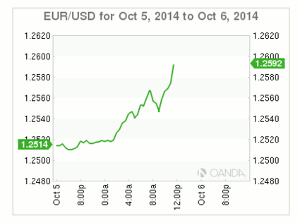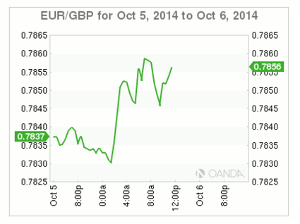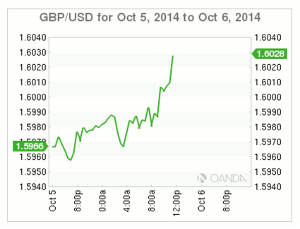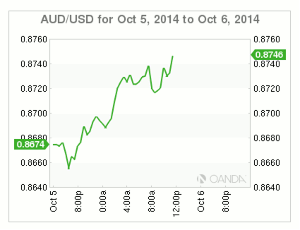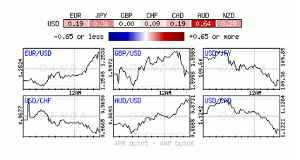Since the US dollar reversal signals are currently absent, the USD’s bullish trajectory should be maintained, but Dean Popplewell of MarketPulse warns traders not to price it in a straight line.
It’s not unusual to witness a subdued trading session following the release of a US jobs report. While straddling a holiday or two, expect many participants to take some time out and reflect on the dollar’s powerful moves in the third quarter. Investors will be asking after watching the buck soar to such lofty heights, “where to from here?” The dominant US dollar’s moves since July have been both telegraphed and one directional. Sitting atop of a few record prices, forecasting the next leg in the fourth quarter will be more challenging for the market.
Recent Commodity Futures Trading Commission data indicates the market has made an aggressive +$35.1 billion net long USD (+238k contracts)—approaching the 2012 record (+311k)—July showed net bets against the USD. However, the theme as we get closer to the end of American quantitative easing (QE) is volatility. Everyone will be closely watching the Federal Open Market Committee (FOMC) minutes this week for signs of the Federal Reserve’s timetable for unraveling QE. Nonetheless, the USD is entering overbought territory (a strong dollar makes it more difficult for exporters). But, much US growth is domestic—and consumer-driven—it’s the possibility of imported deflation that’s a greater concern with a strong dollar.
The Greenback’s Best Run in Decades
The dollar has continued to hover near its highs ever since Europe went home on Friday, while equities rallied hard after digesting the strong payrolls numbers. The US dollar index hit a 52-month high, the S&P saw its biggest one-day gain in six-months, and US yields ratcheted higher (US 10′s +2.43%) on thoughts of higher Fed rates. Sterling outright (£1.5979) suffered its largest one-day decline in over a year, the euro (€1.2540) sank to a fresh two-year low, while USD/CHF (CHF$0.9662) extended its bull run to seven consecutive weeks. So far, on Monday morning, European equity markets have opened higher amid positive leads from the US and reports of protests subsiding in Hong Kong, while Germany’s DAX has also risen sharply after being closed on Friday for a holiday.
With US dollar reversal signals currently absent, the USD’s bullish trajectory should be maintained, but do not price it in a straight line. Both the ‘weaker’ USD longs and euro ‘short’ positions will at some time be confronted by another weak head fake that’s capable of taking individuals ‘out’ for a short period.
NEXT PAGE: The Most Important Factor
|pagebreak|Is It Time for a Short Squeeze?
For the 18-member single unit there is an outside possibility that it will push on toward €1.2670-90 again this week, an area where euro offers are supposedly lined up. Again option strike price will be a market pull this week. Some large higher strike prices expire—including +2.5 billion of €1.26s—this will be a market draw at some stage. The economic data continued to be weak for Europe and would suggest further downside risks for the common currency. The €1.2400 level remains a key psychological point for the EUR/USD pair. This is the level where back in July 2012 European Central Bank chief Mario Draghi pledged he would do everything to defend the unit.
The chance of the ECB launching into full-blown QE (including sovereign bonds) in the first half of 2015 remains high. The most important reason for the increase in probability of QE ‘proper’ is the more dovish interpretation by the market of the data from Draghi last week. Despite the region being fundamentally weak, the market needs to focus on Draghi’s thoughts of inflation. Draghi said, “The longer we stay in a low inflation situation the more this cyclical component gains importance and contributes to inflation.” The ECB cannot rely on the currency to do all the work; instead, it will have to focus on monetary policy. If the December targeted longer-term refinancing operation (credit) and asset-backed securities and covered bond purchases fail to gain traction, the bank will have to contemplate bond purchases in early 2015.
So far, sterling trades below the £1.6000 level in Monday morning’s session. The outright pair has seen little reaction to comments from the UK business sector noting that GBP/USD might be overvalued by as much as +10-15% on a trade-weighted basis.
On Tap for This WeekThe market is not done yet with the central banks. The Reserve Bank of Australia kicks things off later Monday evening. Despite an AUD/USD rally (AUD$0.8727), the market will be expecting some dovish currency comments from Governor Glenn Stevens. It has become a regular part of his rhetoric repertoire. On Tuesday, the Bank of Japan takes center stage; in all respects Prime Minister Shinzo Abe is happy with the yen’s relative weakness of late (¥109.39). Wednesday will be dominated by the FOMC minutes. As per usual, the market will be looking for any clues to justify building on current positions. The Bank of England meeting dominates Thursday: Is Governor Mark Carney still the favorite to be the first developed nation to hike interest rates? Finally on Friday, Canada will report its own jobs report.
By Dean Popplewell, Director of Currency Analysis and Research, MarketPulse

